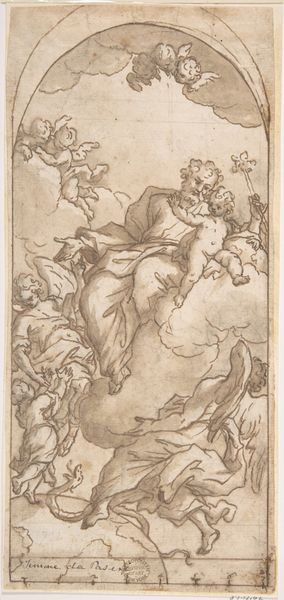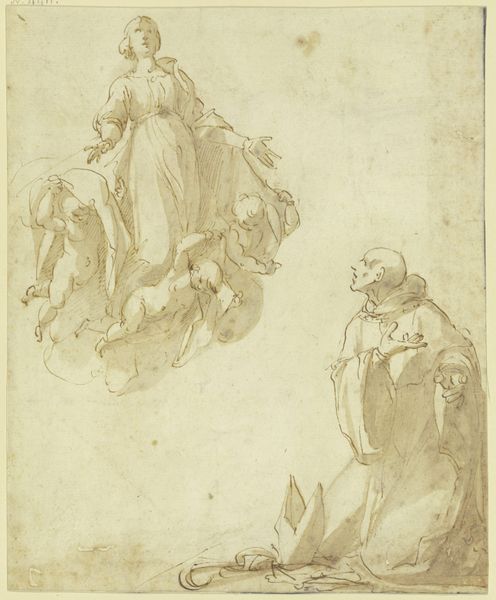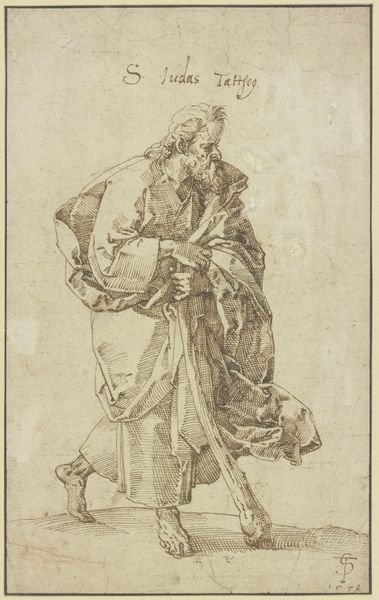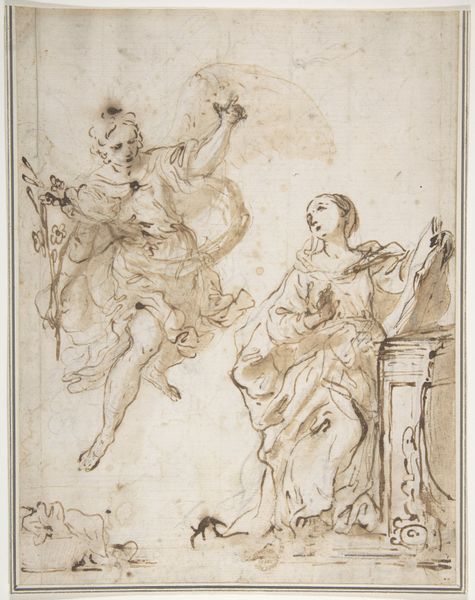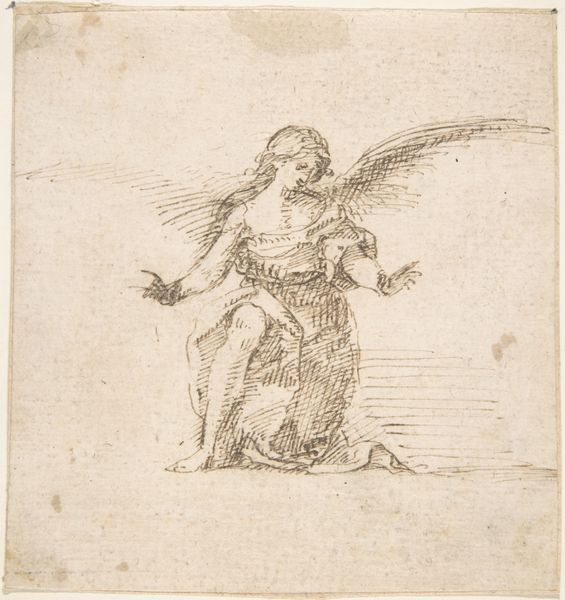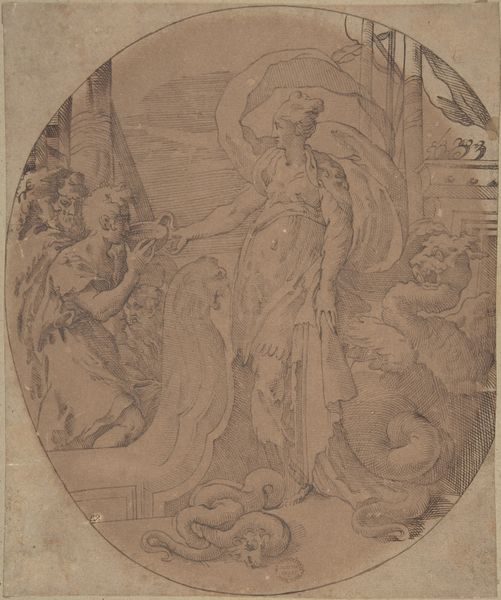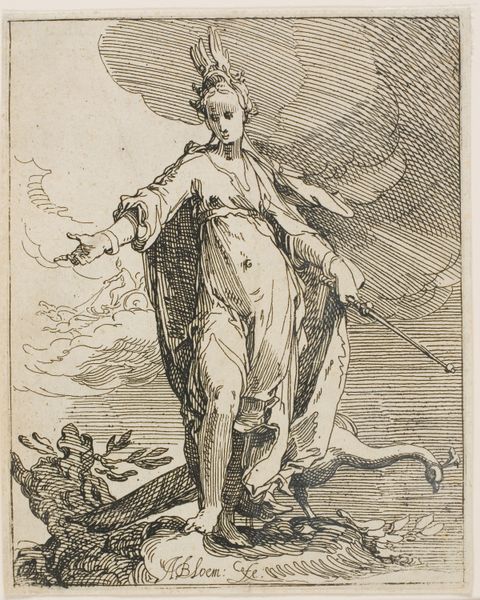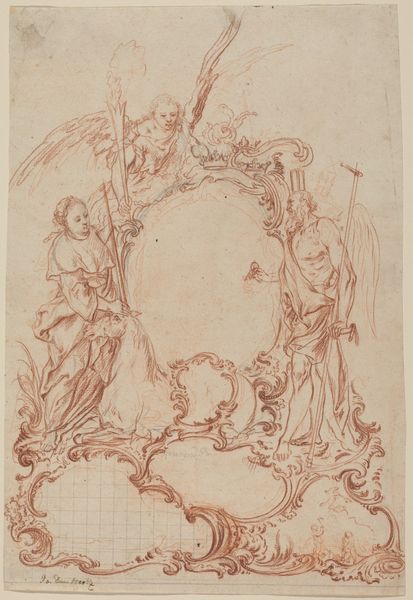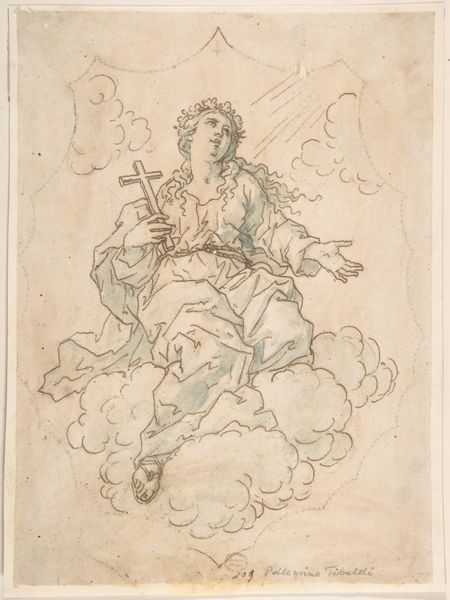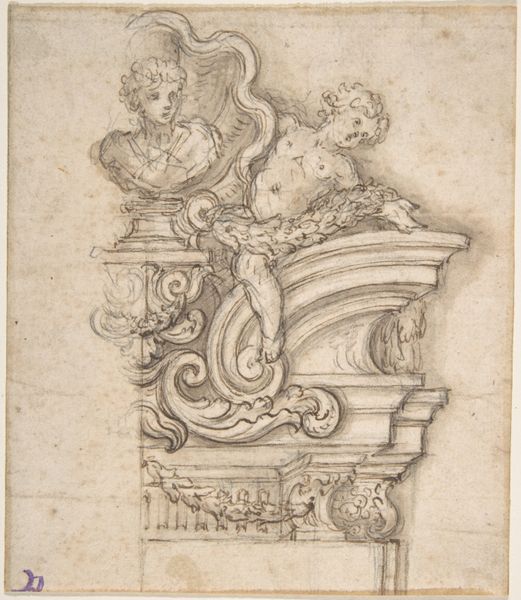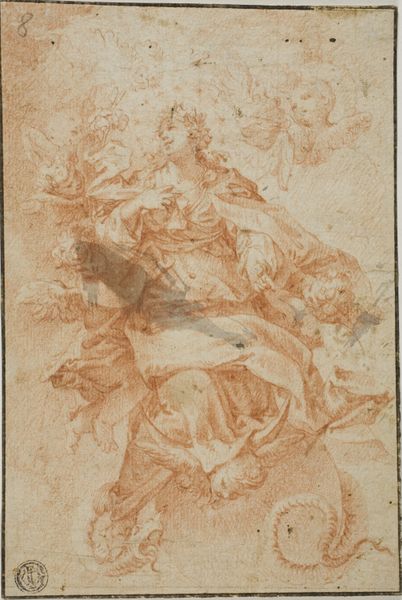
drawing, ink
#
portrait
#
drawing
#
baroque
#
figuration
#
ink
Dimensions: 8-3/16 x 5-3/4 in. (20.8 x 14.6 cm)
Copyright: Public Domain
Editor: Here we have an ink drawing, "Virgin of the Immaculate Conception," made sometime in the 17th century. There's a swirling energy to it, a kind of upward movement created by all the figures and cloud-like shapes. What are your impressions? Curator: Indeed, the dynamism is striking. Note the confident use of line, varying in weight and direction, that articulates form and suggests spatial depth. Observe how the artist employed hatching and cross-hatching to create tonal gradations and give volume to the Virgin's drapery. How do these linear elements contribute to the overall sense of movement you described? Editor: Well, the lines seem to follow the curves of the body and the folds of the clothing, almost directing your eyes upward, creating an ethereal, weightless visual. Curator: Precisely. Consider also the distribution of figures within the composition. How do they create balance or imbalance and subsequently impact our visual experience? Are there geometric patterns we can discern? Editor: The Virgin is the largest element. She's centrally placed with surrounding cherubic figures to create a balanced pyramid shape, making her the obvious focus. The eye moves from her, through the angels, up to the dove at the very top. I now see a defined geometric construction to the design, even if its looseness belies this structure at first glance. Curator: Exactly. Semiotically speaking, consider the verticality suggested within the figure. This contributes greatly to a reading of ascension to the divine. A structural analysis further exposes the importance of line work in developing a semiotic language. I find this reveals the genius in the artistry present. What have you found most informative in our experience? Editor: I really never thought about the connection between the individual mark and the overall impression. I’ll be looking for those dynamics now in other works. Thank you. Curator: My pleasure. Understanding form is critical to decoding content, providing for richer aesthetic interpretation.
Comments
No comments
Be the first to comment and join the conversation on the ultimate creative platform.
